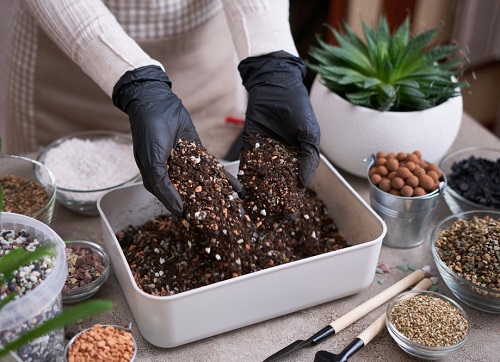Are you aware of some amazing Pumpkin Peel Uses in the Garden? If you don’t – be ready for a surprise; it’s as good as banana peels!
Have you just whipped up a delicious pumpkin pie, and now you’re left with a mound of pumpkin peels? Before you toss them into the compost or trash, hold on a minute! What if I told you that those discarded peels can actually work wonders in your garden? From enriching soil to warding off pests, pumpkin peels offer a treasure trove of benefits you’ve probably never imagined. Intrigued? Keep scrolling to unlock the secret potential of Pumpkin Peel Uses in Garden!
Awesome Citrus Peel Uses In Garden
Pumpkin Peel Uses in Garden
1. Potassium-Packed Fertilizer
Pumpkin peels are rich in potassium (K), just like banana peels, containing approximately 550 milligrams of potassium per 100 grams. And we know that potassium is vital for plant health, as it promotes flower and fruit development, improves drought resistance, and enhances overall plant vigor.
- Boosting Fruit Production: Incorporating composted pumpkin peels into your garden soil can significantly increase fruit production in plants like tomatoes, peppers, and pumpkins.
- Enhancing Flowering: Potassium-rich pumpkin peels are excellent for flowering plants like roses and hibiscus, ensuring a profusion of blossoms.
- Application: Cut the peels into smaller pieces to accelerate the decomposition process. Use 2-3 handfuls per plant.
You can also try this DIY pumpkin peel fertilizer recipe; it’s good for houseplants, vegetables, and small container plants:
- Dry the peels thoroughly in a well-lit spot.
- Grind the dried peels into a fine powder using a blender or mortar and pestle.
- Mix two to four tablespoons of the pumpkin peel powder with one gallon of water.
Let it steep for 24 hours. - Strain the liquid to remove solids.
- Use the resulting liquid as a nutrient-rich fertilizer for your plants, providing essential nutrients like potassium and phosphorus.
- Apply this pumpkin peel fertilizer to your plants every 2-4 weeks for healthier growth.
- Alternatively, you can also disperse a tablespoon of this powder around the base of your plants.
DIY Potassium Rich Plant Fertilizer | Homemade Potassium Fertilizer Recipe
2. Root Development Support
While potassium is the standout nutrient, pumpkin peels also contain phosphorus (P), essential for root development, at approximately 20 milligrams per 100 grams.
- Healthy Root Systems Pumpkin peels provide a natural source of phosphorus, fostering robust root systems in various plants, including indoor plants, vegetables, annuals, and perennials.
- Improved Nutrient Uptake: Strong roots enable plants to absorb essential nutrients more efficiently from the soil.
- Application: The same as above!
3. Soil Enrichment and Conditioning

Pumpkin peels are rich in key macro and micronutrients like potassium, phosphorus, and magnesium. These nutrients contribute to enriching the soil profile, making it more fertile and conducive for plant growth.
The decomposition of pumpkin peels can improve the soil’s physical properties. It can convert compacted, hard-to-work soil into a more friable, workable medium.
Amazing Irish Spring Soap Uses
The organic matter from the pumpkin peels helps bind soil particles into aggregates, improving soil structure. Better soil structure increases pore space, leading to improved air and water infiltration rates.
- Enhanced Soil Fertility: As pumpkin peels decompose, they release nutrients gradually, enriching the soil with essential elements.
- Reduced Soil Erosion: The organic matter in pumpkin peels helps prevent soil erosion and compaction.
- Application: Let the peels dry in the sun for 1-2 days until they become brittle. Once dry, grind the peels using a blender or food processor. Use 2-4 tablespoons per plant in 8-10 weeks.
4. Pest Deterrent and Disease Resistance
Nutrient Composition: Pumpkin peels contain compounds like cucurbitacin, which may act as natural repellents against certain garden pests.
- Pest Deterrence: Placing composted pumpkin peels around the base of plants may deter pests like aphids, cucumber beetles, and squash bugs.
- Potential Disease Suppression: Some gardeners believe that the presence of cucurbitacin compounds in pumpkin peels may contribute to disease resistance in nearby plants.
- Application: Take the small pieces of pumpkin peel and scatter them around the base of the plants. The scent and taste of the peels act as natural deterrents to pests like ants and slugs.
Bizarre Pest Control Remedies and Ideas for Gardeners
5. Sustainable Gardening Practices
Using pumpkin peels as garden fertilizer reduces kitchen waste and lessens the need for chemical fertilizers, promoting eco-friendliness in your gardening endeavors.
As a Mulch
- Soil Moisture: Pumpkin peels can help in retaining soil moisture.
- Weed Control: When used as a mulch, they can inhibit the growth of weeds.
How to Use
Spread thinly over the soil, avoiding direct contact with plant stems to prevent rot.
Vermicomposting
- Efficient Decomposition: Earthworms love pumpkin peels, making it a fantastic addition to vermicomposting systems.
- Quality Worm Castings: Produces high-quality worm castings rich in nutrients.
Conclusion
The humble pumpkin peel, often relegated to the compost bin or thrown away as something useless, emerges as a powerhouse of nutrients and benefits for your plants. Backed by factual nutrient composition, pumpkin peels can become an effective, eco-friendly, and sustainable garden fertilizer.
Surprising Potato Peel and Slices Uses in the Garden
By incorporating these nutrient-rich peels into your gardening practices, you’re not only enriching your soil but also enjoying healthier plants, increased yields, and a more environmentally conscious garden. It’s time to embrace the green goldmine that lies within your kitchen scraps and unlock the full potential of your garden’s growth.






